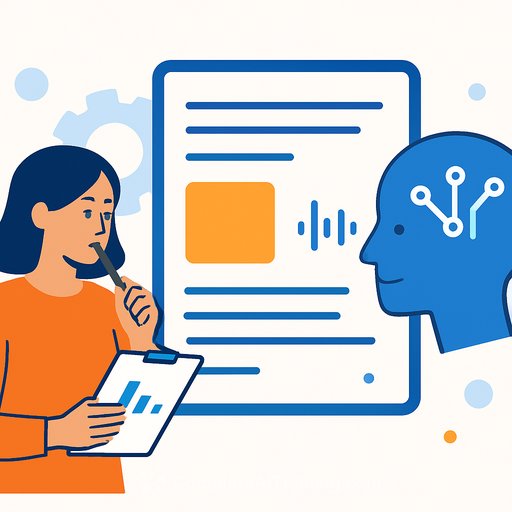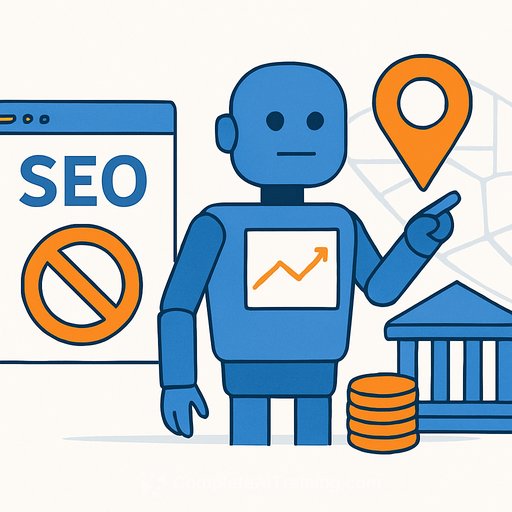Fostering employees' AI adoption in strategic marketing planning and decision making
Marketing teams don't struggle with AI because of the tools. They struggle because of incentives, culture, skills, and fear. A mixed-method study in Vietnam (699 survey responses, 21 interviews) published in Cognition, Technology & Work (2025) mapped these levers with rare clarity.
Here's what moved intention and actual use-and how to apply it inside your team.
Key findings you can act on
- Institutional pressures: Compliance and top-down requirements (coercive pressures) strongly increase intention to adopt AI. "Everyone else is doing it" and industry norms (mimetic, normative) had limited effects.
- Organization-level: Organizational flexibility and visible commitment from top management are decisive. If leaders back AI with budgets, policies, and time, adoption rises.
- Individual-level: AI literacy enables adoption. AI anxiety blocks it.
- Moderators: Personal innovativeness strengthens the link between "I intend to use AI" and "I actually use it." High perceived accountability (e.g., fear of being blamed for AI mistakes) weakens that link.
What this means for marketing leaders
- Make AI a clear expectation. Put it in policies, KPIs, and workflows. Don't rely on peer pressure.
- Show commitment from the top. Budget tools, training, and time. Model usage in leadership updates.
- Build literacy, lower anxiety. Short, role-based training plus safe sandboxes. Start with low-risk tasks.
- Back your innovators. Identify early adopters, give them room to test, then let them coach peers.
- Balance accountability. Shift from blame to learning. Use review checkpoints and human-in-the-loop for high-stakes work.
90-day rollout plan
- Days 0-30: Set the stage
- Inventory current workflows in planning, research, forecasting, and reporting.
- Pick 3 low-risk, high-frequency use cases (e.g., research summaries, draft briefs, scenario outlines).
- Publish simple rules: data handling, review steps, approved tools.
- Announce expectations and the purpose: better decisions, faster cycles.
- Days 31-60: Pilot and prove
- Run pilots with your most innovative team members.
- Track time saved, quality, and decision speed. Capture prompts and best practices.
- Host weekly office hours. Tackle anxiety with live demos and Q&A.
- Days 61-90: Scale and standardize
- Fold validated steps into SOPs and templates.
- Set team-level targets (e.g., 2 AI-assisted tasks per person per week).
- Coach managers to reinforce usage and protect time for experimentation.
High-value use cases for strategic marketing work
- Market sensing: Summarize reports, social chatter, and customer feedback into weekly briefs with sources for verification.
- Scenario planning: Generate alternative channel mixes, budget splits, and "what if" assumptions for review.
- Forecast support: Create baseline projections, anomaly flags, and narrative explanations for stakeholder decks.
- Win/loss and voice-of-customer: Thematic coding of call notes and open-ended survey data.
- Creative and offer testing: Rapid variants, message matrices, and pre-briefs before formal creative work.
Guardrails that boost confidence
- Data safety: No sensitive PII in prompts. Use enterprise tools with logging and access controls.
- Review checkpoints: AI drafts; humans approve. Require sources for claims in planning docs.
- Prompt hygiene: Standardize prompts; store them in a shared library with examples and caveats.
- Clear accountability: Owners approve outputs; teams learn from errors without punishment.
Metrics to track
- Adoption: % of team using AI weekly; number of AI-assisted tasks per person.
- Efficiency: time to first draft, decision cycle time, analysis turnaround.
- Effectiveness: forecast error, brief quality scores, test win rate.
- Risk and sentiment: policy violations (target: zero), AI anxiety score from pulse surveys.
Manager prompts to keep momentum
- What AI-assisted task saved you the most time this week?
- Where did AI fall short, and what change in process or prompt would fix it?
- What decision did we make faster or with more confidence because of AI input?
Level up skills
If you need structured upskilling for marketing roles, see the AI Certification for Marketing Specialists at Complete AI Training.
Sources
Mixed-method study in Cognition, Technology & Work (2025): DOI: 10.1007/s10111-025-00838-1
AI risk guidance: NIST AI Risk Management Framework
Your membership also unlocks:






